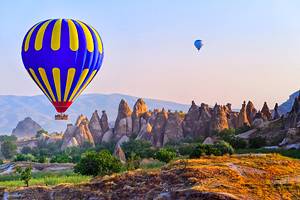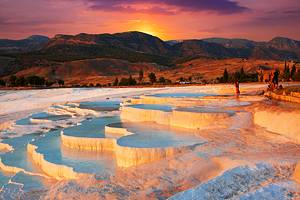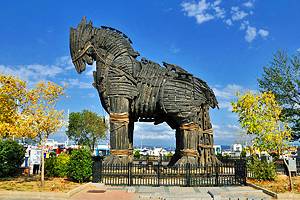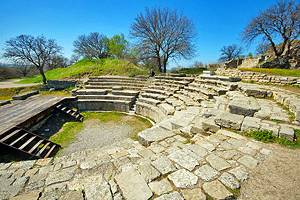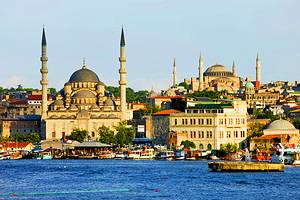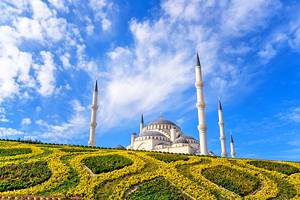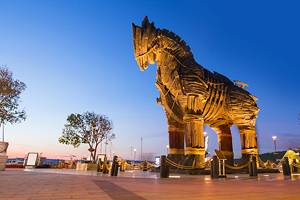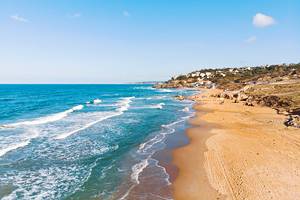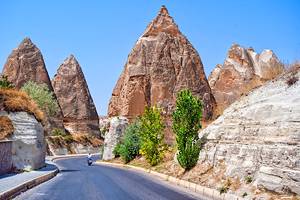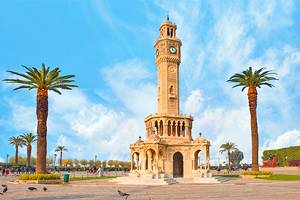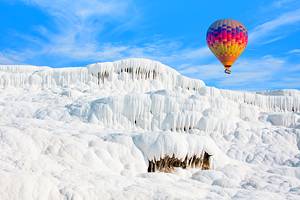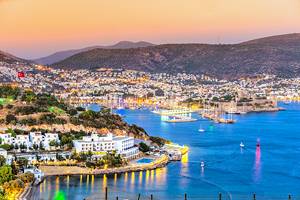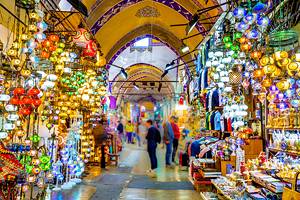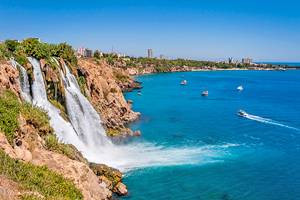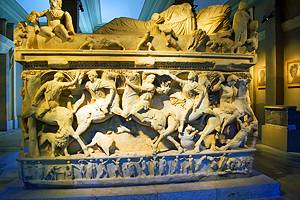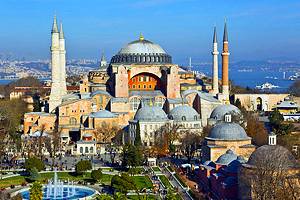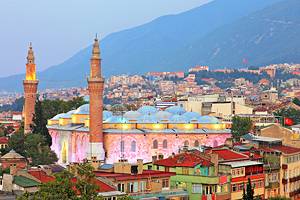Things to Do in Edirne, Turkey
Anyone interested in Ottoman architecture needs to add Edirne to their Turkey itinerary.
Once the Roman city of Adrianople, Edirne became capital of the Ottoman Empire in 1363, and it was from here that Mehmet the Conqueror launched his victorious military campaign to capture Constantinople (modern-day Istanbul). Even after Constantinople stole Edirne's crown, successive sultans continued anointing the city with grand architectural works.
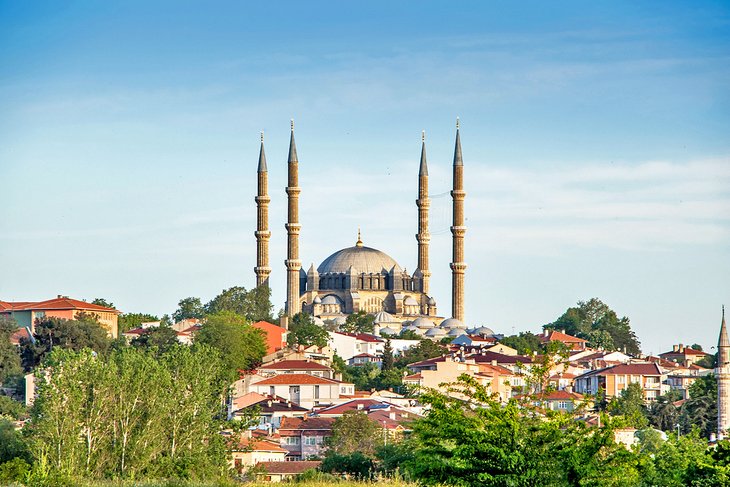
The main tourist attraction people come to see is the Selimiye Mosque, agreed by most historians to represent the epitome of Ottoman architectural design. There is plenty more finery to explore and things to do beyond this major landmark, though.
Edirne is home to three other grand mosque complexes, Turkey's most finely restored synagogue, and — being a riverine town — several well-preserved Ottoman-era bridges.
For travelers interested in cultural events, Edirne is also one of the best places to visit. In June or July every year, Edirne plays host to the Kırkpınar Oil Wrestling Festival, which brings a flood of tourists into town for the three-day event. Competitive oil wrestling is said to have roots going back to the 14th century, though this festival only became an official calendar event in Turkey's modern era.
Outside of when the oil wrestling is on, you'll find Edirne remarkably less touristic than nearby Istanbul. This is because today, the city lays snug on the border with Greece (the Pazarkule border is six kilometers southwest), and many travelers beginning their travels in Istanbul tend to head south or east, leaving Edirne out of their plans.
Edirne is, though, an easy diversion if you're on the way to the Gallipoli Peninsula and the Aegean Coast, and it's only a three-hour (254-kilometer) journey west from Istanbul.
Decide how to plan your sightseeing with our list of the top things to do in Edirne.
Admire the Selimiye Mosque
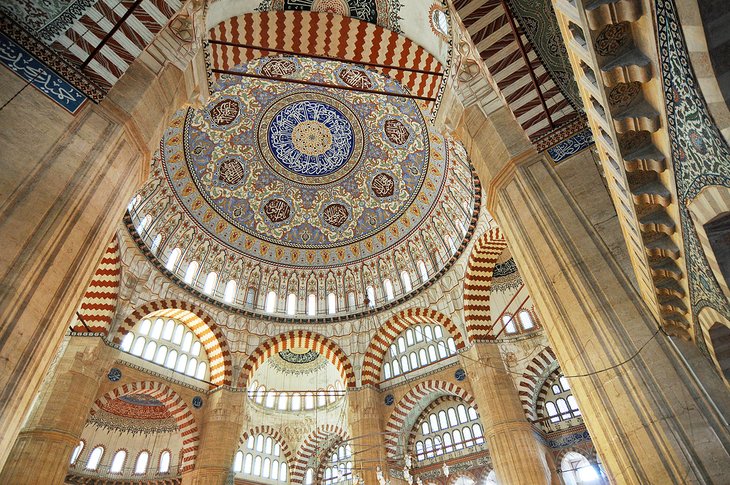
Edirne's most famous landmark is this Ottoman Imperial mosque, built by the famed architect Sinan for Sultan Selim II in 1574.
The mosque is considered Sinan's most spectacular work, and due to its historical importance and the mosque's architectural beauty, it's a UNESCO World Heritage site.
The interior prayer hall is topped by a massive dome bordered by eight pillars, while the surrounding walls feature extensive elaborate calligraphy decoration and 999 stained-glass windows.
In front of the mosque is the long arcaded arasta building, which today still performs its original function as a shopping arcade.
Behind the mosque, the original medrese (theological school) building houses the Museum of Turkish and Islamic Art. This displays religious artifacts collected from Edirne's many mosques including the original kündekari (interlocking wood design) door wings from Edirne's Beyazıt Complex.
Directly behind the Museum of Turkish and Islamic Art you'll find Edirne's Archaeological and Ethnographical Museum which holds a collection that ranges from Thracian stele and menhir (orthostats) to Ottoman era local costumes and textiles, woodwork and ceramics.
Address: Mimar Sinan Caddesi
Explore the Kaleiçi District
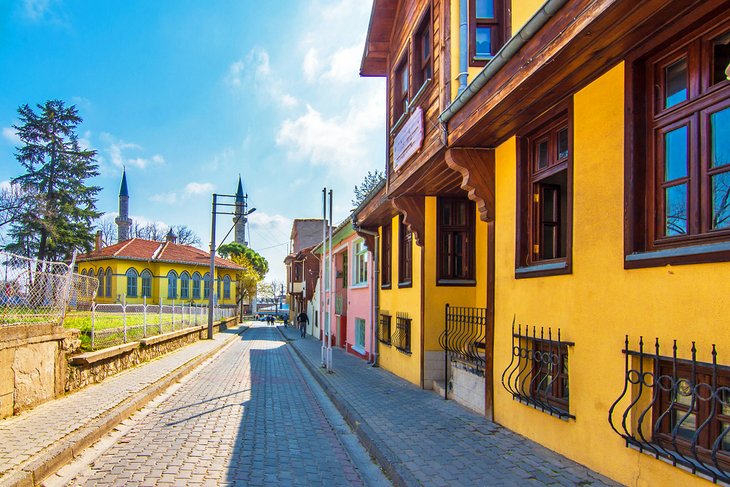
Edirne's Kaleiçı (Old Town) district is a tight grid of streets that sprawls southwest of the Selimiye Mosque. This was the center of town during the medieval era.
Some sections of the area have been restored, with alleys lined with small candy-colored houses with bendy wood-beam details and larger timber mansions, much of which dates from the 18th and 19th centuries.
It's a great place for an aimless stroll with the mix of restored heritage architecture rubbing up against other buildings slowly slipping into various states of dilapidation.
Although most of Edirne's rock-bottom budget accommodation is found here, a couple of larger mansions in the district have been restored and developed into boutique hotels making for atmospheric places to stay.
One of the best streets with examples of Ottoman-era architecture is Maarif Caddesi.
Visit the Old Mosque Complex & Bedesten
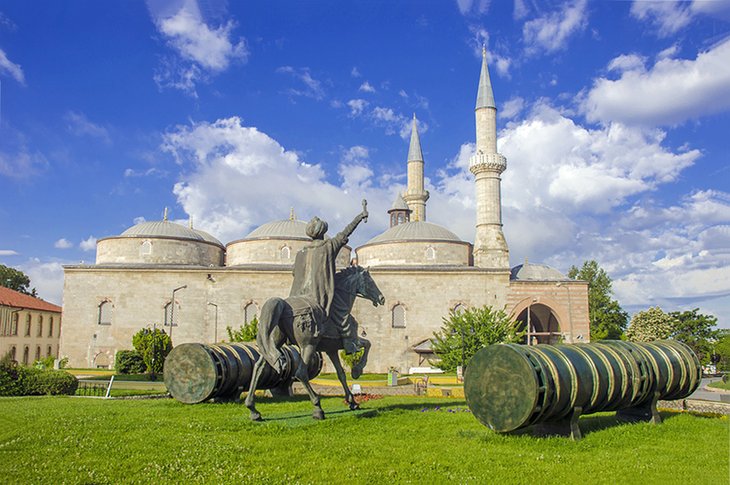
Edirne's Old Mosque (Eski Cami or also called the Eski Ulu Cami) is often overshadowed by the Selimiye Mosque but is well worth a visit. This is the earliest Ottoman Imperial mosque in Edirne, dating from 1414.
Its squat exterior is much less showy than the Selimiye Mosque from a distance, and takes much of its architectural influence from the Grand Mosque of Bursa.
Up close, the mosque's stone façade, surrounding the interior courtyard, features mammoth calligraphy designs, which are a later feature, added in the 19th century.
Inside, the multi-domed prayer hall with its striped stone arcades is a riot of Islamic design. Of particular note, the internal domes are covered with intricate, swirling floral motif patterns and calligraphic work.
Address: Lise Bayırı Sokak
Discover the City's Cosmopolitan Past in Edirne Synagogue
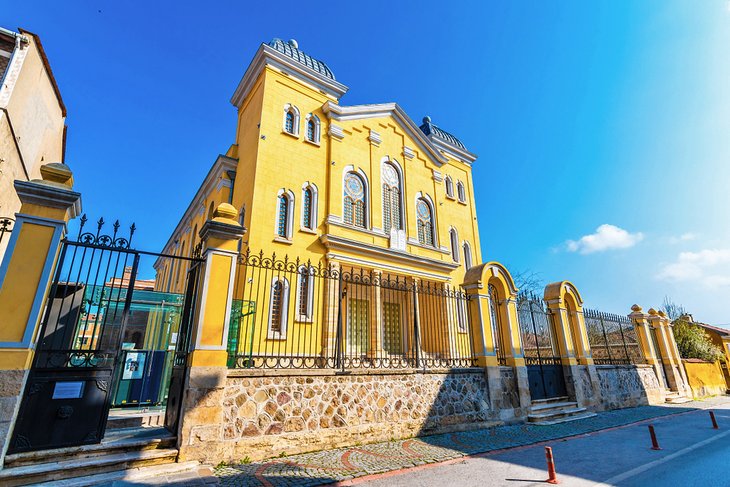
One of the grandest restoration projects in Edirne's Kaleiçi district is this synagogue, which once served the large Sephardic Jewish community that lived in the city.
Edirne was home to a Jewish community since the Byzantine period, but it was during the Ottoman era, that the community thrived, with many Jews migrating here to escape persecution in Catholic-run Europe.
By the early 20th century, the Jewish population here was estimated at around 24,000.
After the fall of the Ottoman Empire, Edirne's Jews suffered severe persecution as the city's last remaining minority community (Edirne's large Greek population had already been forcibly removed to Greece under the conditions of the Lausanne Treaty).
Many of Edirne's Jews moved to Istanbul, leaving the city permanently, and in the decades after WWII, the vast majority of the remaining population migrated overseas.
The synagogue is a fine example of early 20th century architecture, and its cheerful yellow-painted exterior looms over the surrounding buildings. It dates from 1909, as Edirne's previous synagogues were all destroyed during a massive city fire in 1905.
Inside, the lofty arcaded interior hosts lemon and blue painted wall and ceiling features, and a finely detailed tilework floor. Various information boards inside explain the history of Edirne's Jewish community.
Address: Maarif Caddesi
Check Out the Ornate Minarets of the Üç Şerefeli Mosque
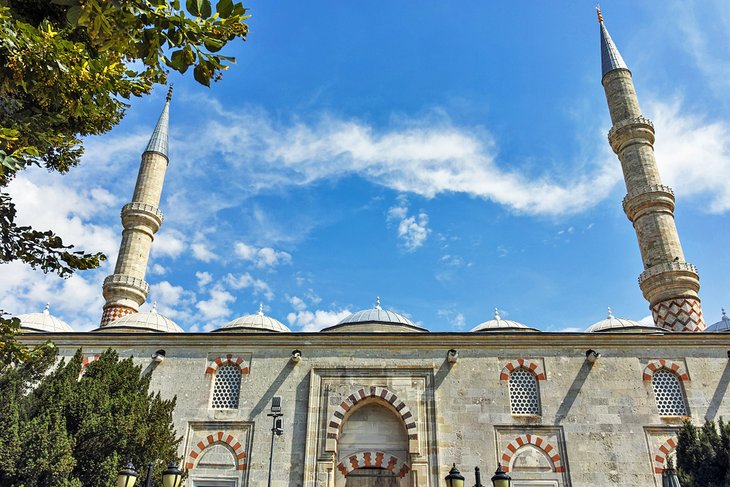
The Üç Şerefeli (Three Balconies) Mosque is named after the three balconies that rim the largest of its four minarets. The other minarets all feature one or two balconies.
The mosque's four minarets are its most famous feature. All are uniquely designed with red and white stone, in various checker, star, and spiral patterns, so that they deliberately don't match each other.
Built in 1447 during the reign of Sultan Murad II, the mosque's interior is a good example of early Ottoman era Islamic design, which was still merging features of the Seljuk style into architecture.
At the time it was completed, it was the largest mosque the Ottomans had ever built.
The prayer hall's dome is lavishly decorated with floral motif patterns, while the walls feature blue tilework panels.
Address: Hükümet Caddesi
Stroll the Riverbank Area
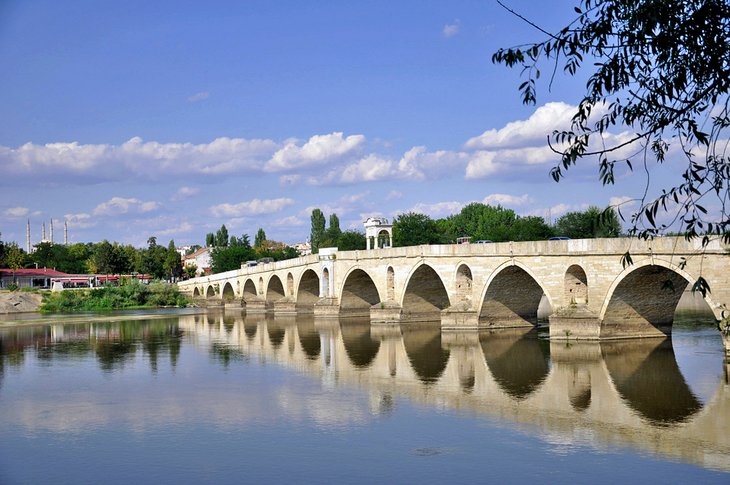
Edirne is bordered by two rivers. The Meriç River runs along the southwestern edge of the city, while the Tunca River cuts through the far northwestern side of town.
Riverside is a great place for a stroll, and there are several small historic sites that can be visited along the way.
The western side of the Tunca River is home to the Eski Sarayı (Old Palace) ruins. The remains are all that is left of Sultan Murad II's palace, which began construction in 1450.
Not long afterwards, Edirne lost its important role as Ottoman capital when Murad II's successor, Mehmet the Conqueror, successfully took Byzantine Constantinople, but Edirne's palace was often used intermittently by sultans during their reigns.
Some of the palace buildings were used as an arsenal during the 19th century, and before the Russian occupation of Edirne in 1878, the buildings were destroyed to prevent the Russians getting hold of the weaponry that was stored there.
The palace buildings that survived the assault were then destroyed during the early 20th century Balkan wars.
Today, the palace kitchens have been restored, and there are various fragments of ruins scattered across the area, still standing.
To the southwest of central Edirne is the Meriç River, straddled by the Meriç Bridge built in the 1840s. This is the longest of Edirne's several historic river bridges, with the stonework featuring 12 arches across its 263 meters of length.
Visit the Health Museum inside the Sultan Beyazıt II Mosque Complex
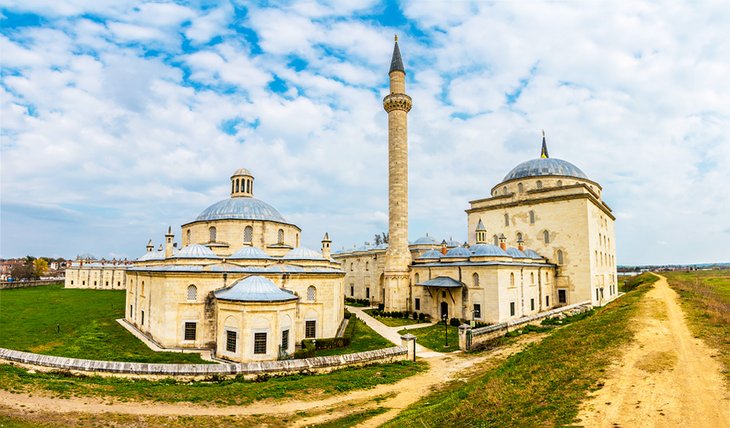
Also on the western side of the Tunca River is this mosque complex, built in 1488 during Sultan Beyazıt II's reign.
This is Edirne's most complete mosque complex (külliye), with the compound's original hospital, medical school, and guesthouse buildings still preserved. The Sultan Beyazıt II Bridge, which leads across the river to the complex, also dates from 1488.
The main reason to head here is to visit the complex's hospital (Darüşşifa), now Edirne's Health Museum, featuring displays and dioramas on Ottoman-era health practices. This hospital, specializing in psychiatric illnesses, operated from 1488 to 1909.
Psychiatric illnesses were treated on a humane level in the Ottoman Empire, and Edirne's hospital offered residents forward-thinking (for the times) music and sound therapies. Note the fountains in the courtyard, used for the water's calming influence on patients.
Address: Beyazıt 2 Caddesi
Explore the Edirne Suburb of Karaağaç
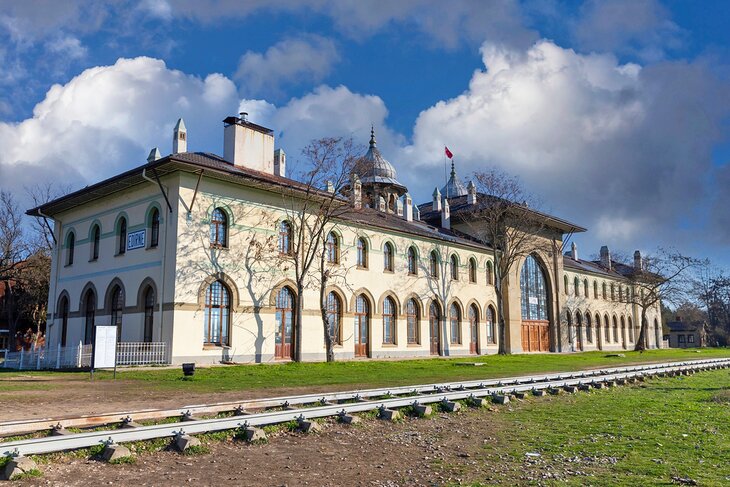
If you head west from the Meriç Bridge, across the Meriç River, you can walk two kilometers to the suburb of Karaağaç where you'll find the Lausanne Monument and a couple of small museums.
The Lausanne Monument commemorates the signing of the Treaty of Lausanne, which, over eight months in 1922 and 1923, negotiated the modern borders of Greece and Turkey after the Turkish War for Independence. Karaağaç itself (which is two kilometers from the modern border) was designated to lie on the Turkish side of the border during the treaty negotiations.
The Lausanne Monument is near the old train station, which was Edirne's main railway station until the 1970s and used to service the Orient Express train. Today the building is used by Trakya University but its fine late-Ottoman facade and the old locomotives on display outside are worth a look.
Road-Trip through the Thrace Countryside
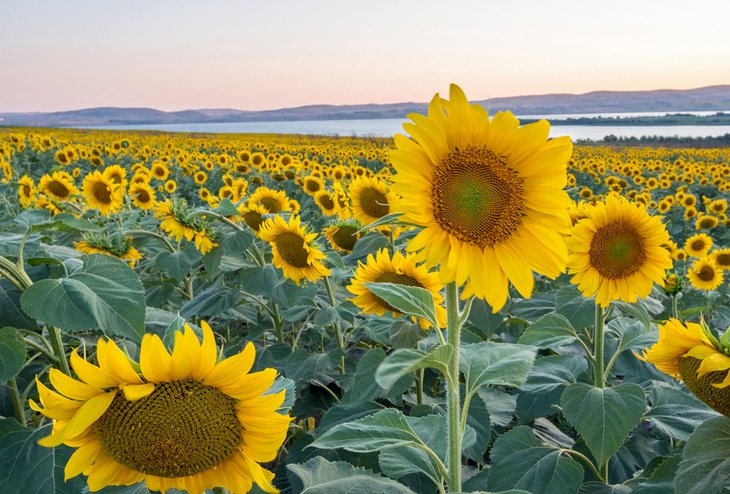
The historical region of East Thrace covers all of Turkey's European landmass - from the borders with Greece and Bulgaria to the Bosphorus Strait in Istanbul.
The coastal strip here, running parallel to the Sea of Marmara, is home to rolling fields of sunflowers and grapevines.
For a scenic road trip, head to the town of Tekirdağ, 137 kilometers southeast from Edirne, on the coast and then turn west, following the road, which is lined with sunflower fields, to the Gallipoli Peninsula.
On the way to Tekirdağ, travelers with a historical interest may want to stop in the towns of Babaeski (54 kilometers southeast from Edirne) and Lüleburgaz (88 kilometers southeast).
Both these small towns lay claim to their main mosques being designed by famed Ottoman architect Sinan. Babaeski is also home to a well-preserved, 17th-century stone-arched bridge.
Hike in Iğneada Floodplain Forests National Park
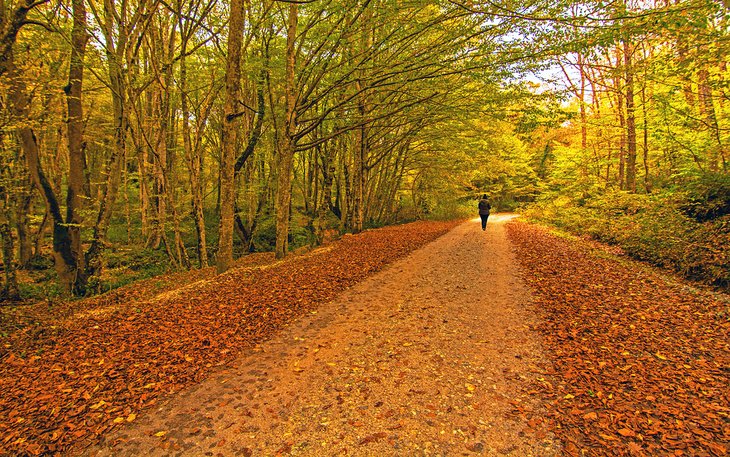
The Iğneada Floodplain Forests National Park, 162 kilometers east from Edirne, stretches along the Black Sea's coast, just south of Turkey's border with Bulgaria.
This is one of the last floodplain forest areas left in Europe, with thick stands of European ash, beech, alder, and oak trees interspersed between marshland, dunes, and lakes.
It's a popular weekend camping and hiking spot, and visitors can hire kayaks to explore Mert Lake, as well as arrange fishing boat trips here.
The park's base is the small town of Iğneada, with its Black Sea beach shoreline and Mert Lake at its southern edge.
Farther south in the park, Hamam Lake is one of the easiest accessible spots, as it's only a short walk from a park entrance.
Day Trip to Kurşunlugerme Aqueduct
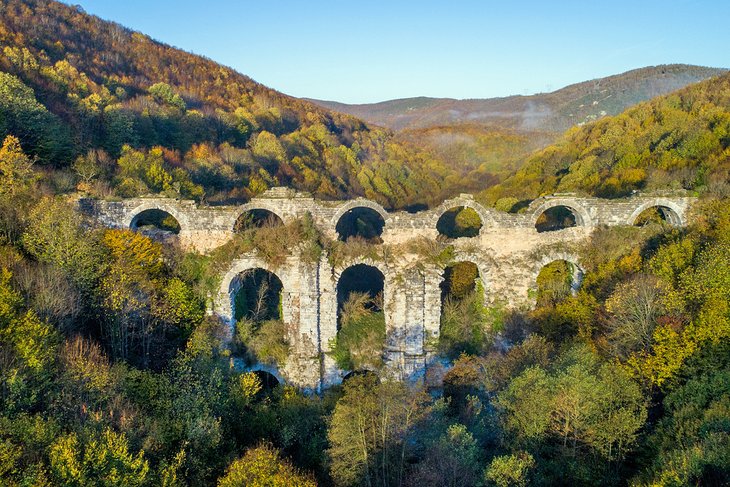
If you have your own vehicle, this three-story Roman-Byzantine-built aqueduct is a worthwhile detour on the route between Edirne and Istanbul, or a day trip destination from Edirne.
Surrounded by thick forest, the aqueduct showcases the extensive water works system, which once supplied water to Constantinople.
First thought to have been built by the Romans in the 2nd century and then extensively rebuilt by the Byzantines during the 6th century, the structure spans 192 meters long and is 35 meters high.
Although partial portions of the building have been destroyed by treasure hunters, it is still a hugely impressive sight, particularly in summer, when it's half enveloped by lush greenery.
It is 183 kilometers southeast from Edirne, with the aqueduct access road running from the small settlement of Gümüşpınar.
A short trail (around 150 meters walk) leads from the access road to the base of the aqueduct. There are also other hiking trails to scenic lookout points where you can view the structure from above.
Edirne, Turkey - Climate Chart
| Average minimum and maximum temperatures for Edirne, Turkey in °C | |||||||||||
| J | F | M | A | M | J | J | A | S | O | N | D |
| 6 -1 | 9 1 | 13 3 | 19 7 | 25 11 | 29 15 | 31 17 | 31 16 | 27 13 | 20 9 | 14 5 | 8 1 |
| PlanetWare.com | |||||||||||
| Average monthly precipitation totals for Edirne, Turkey in mm. | |||||||||||
| 61 | 53 | 56 | 53 | 48 | 41 | 25 | 25 | 36 | 46 | 64 | 71 |
| Average minimum and maximum temperatures for Edirne, Turkey in °F | |||||||||||
| J | F | M | A | M | J | J | A | S | O | N | D |
| 43 30 | 48 33 | 55 37 | 66 44 | 76 52 | 83 59 | 88 63 | 87 61 | 80 55 | 68 47 | 57 41 | 46 34 |
| PlanetWare.com | |||||||||||
| Average monthly precipitation totals for Edirne, Turkey in inches. | |||||||||||
| 2.4 | 2.1 | 2.2 | 2.1 | 1.9 | 1.6 | 1.0 | 1.0 | 1.4 | 1.8 | 2.5 | 2.8 |


